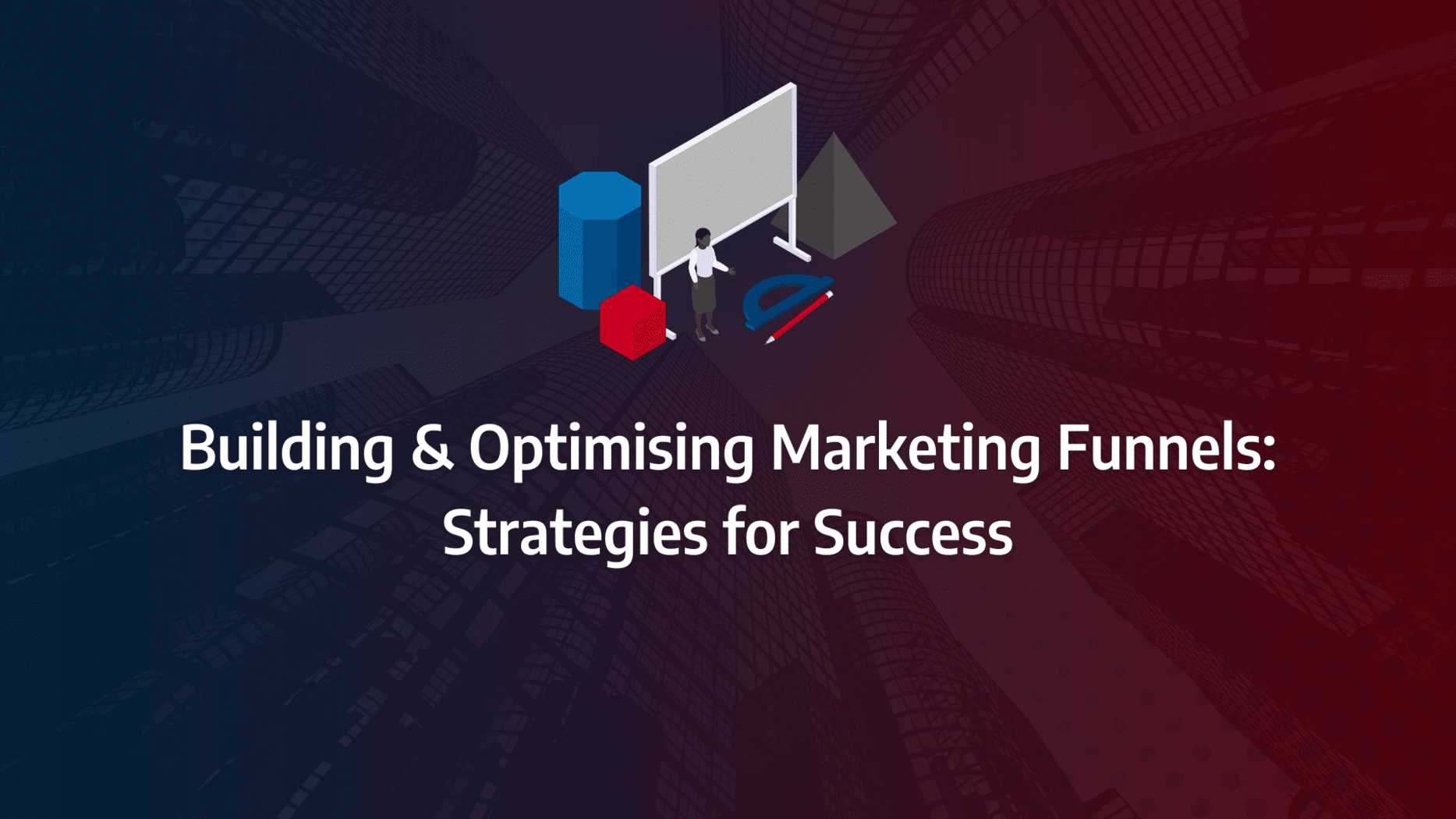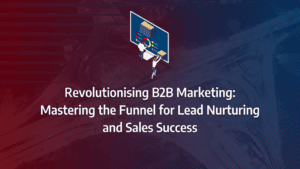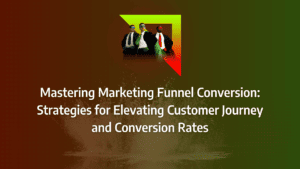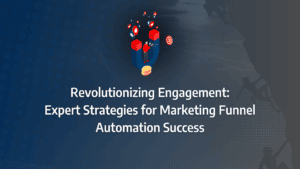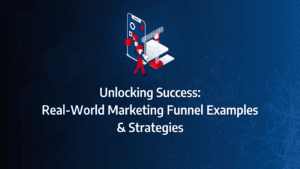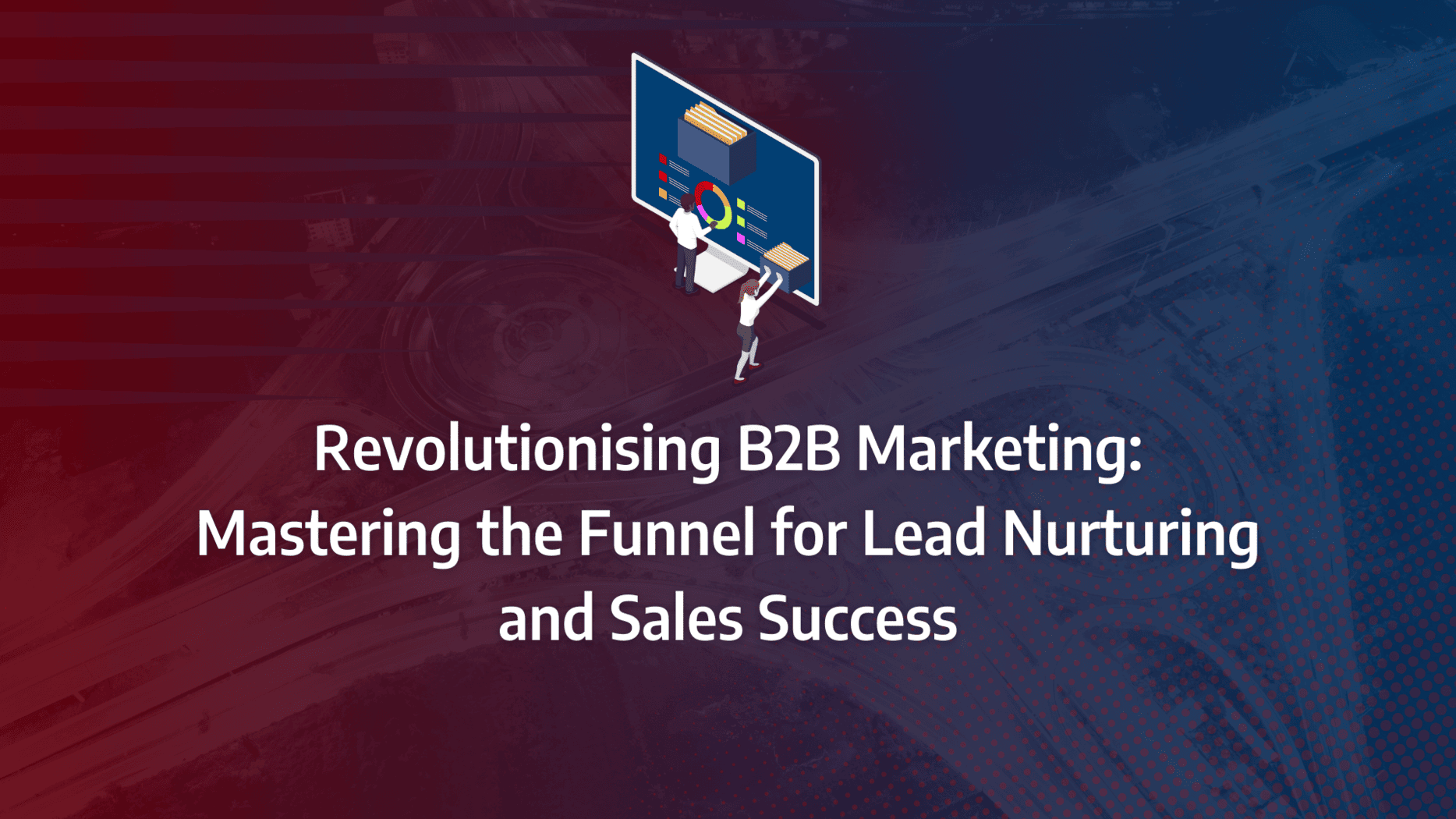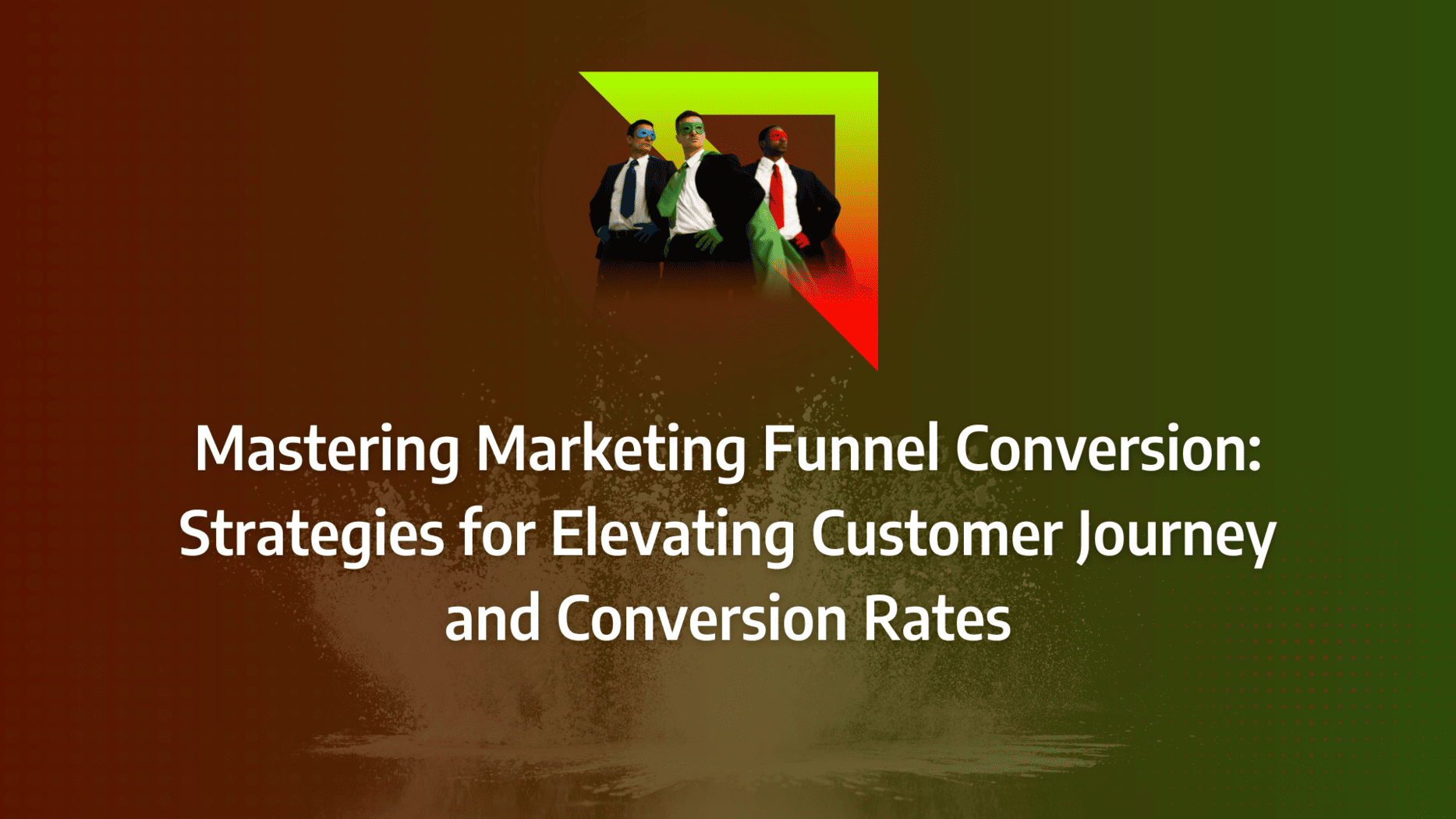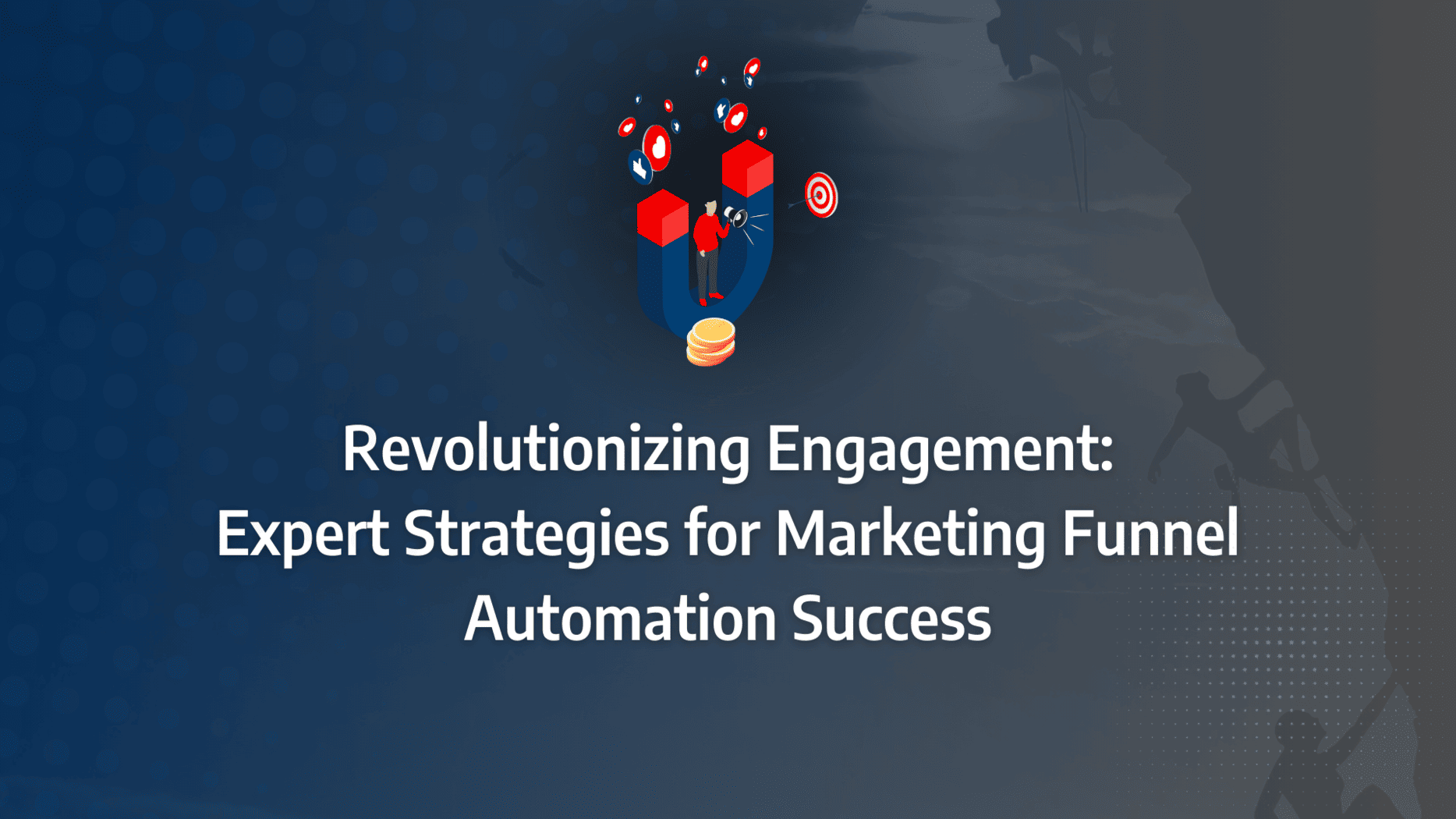Are your marketing funnels driving the results you need, or are they leaking potential customers at critical stages? Building a marketing funnel is one thing, but optimising it to maximise conversions and ROI is where the real challenge lies. In this guide, we’ll walk you through proven strategies for constructing and refining your marketing funnels to ensure every lead progresses smoothly from awareness to conversion.
From identifying common bottlenecks to implementing effective automation tools, this comprehensive guide will provide you with the actionable steps needed to elevate your funnel’s performance. Let’s dive into the process and start turning those leads into loyal customers.
- Optimising each stage of your marketing funnel is crucial for driving conversions and improving ROI. Regularly evaluate and refine your funnel to address bottlenecks and inefficiencies.
- Utilise frameworks like the AIDA model to structure your funnel effectively, ensuring that your content and strategies align with each stage of the customer journey.
- Incorporate automation tools to streamline processes and enhance lead nurturing, from CRM systems to automated email sequences tailored to specific funnel stages.
- Leverage data and analytics to monitor your funnel’s performance, identifying where leads drop off and adjusting strategies accordingly for continuous improvement.
- Tailor your funnel to your target audience, ensuring that your messaging, content, and offers resonate at every stage, from awareness to decision-making.
What is a Marketing Funnel?
A marketing funnel serves as a visual representation of the journey a lead takes on their path to becoming a customer. Every business, at some stage, has utilised a marketing funnel to drive sales. This funnel aids brands in visualising their sales process and is the most effective tool for measuring conversion success at each stage of the funnel.
Given the variety of businesses utilising the marketing funnel, it is known by different names, such as “sales funnel,” “lead funnel,” “purchase funnel,” and more. Despite the varying names, the primary goal remains the same: converting leads into real customers.
The width of each stage in the funnel reflects the audience size, with the widest point at the top and the narrowest at the bottom. Fully comprehending the marketing funnel is vital because, similar to a physical funnel, a large volume of leads enters at the top, which narrows as they progress down the funnel.
The critical question when employing a marketing funnel strategy is: How can brands ensure more leads move through the funnel and convert into actual customers?
What Matters Most?
Successful marketing funnels are driven by a deep understanding of customer journeys, not just linear stages. Our clients often discover that growth loops—where each stage of the funnel reinforces the next—create compounding momentum that scales. We typically recommend aligning the funnel’s messaging and positioning with specific customer pain points, ensuring prospects feel understood at each step. Additionally, the alignment of sales and marketing is critical for smooth transitions between stages, making sure no prospect gets lost as they move from awareness to decision.Get In Touch
The Stages of a Marketing Funnel
The concept of the sales funnel was introduced by Elias St. Elmo Lewis in 1898. The original funnel model he developed remains one of the most widely used by brands today. At each stage, brands should evaluate their marketing funnel strategy by asking the following questions:
- Awareness: How can the brand increase buyers’ awareness of their products or services? What strategies are in place to create brand awareness?
- Interest: How can the brand capture the customers’ interest? What content strategy can be employed?
- Desire: What makes the product or service desirable? How can brands engage leads personally to establish an emotional connection?
- Action: What call-to-action (CTA) buttons are used, and where are they placed? Can leads easily find and use these buttons? Consider which marketing platforms the brand currently uses to enhance engagement, such as websites, landing pages, and emails.
- Retention: What does the brand offer to encourage customer loyalty?
By meticulously answering these questions at each stage, brands can fine-tune their marketing funnel strategy to ensure a higher conversion rate and effective customer retention.
Why is the Marketing Funnel Still Relevant?
The modern marketing funnel has evolved significantly from its traditional counterpart. While the stages of the funnel remain, their appearance and function have transformed. Brands must continuously strive to attract leads, generate interest, foster engagement, cultivate desire, and prompt action. However, the sequence and strategies employed can vary.
In today’s information-rich environment, leads are well-informed about products and services, often learning from multiple sources. Once they become customers, they can evolve into brand advocates or critics. Therefore, a brand’s responsibility is to delight customers at every stage, shifting the focus from simple awareness and purchase to delivering unique, memorable experiences.
How Does a Marketing Funnel Work?
To grasp the workings of a marketing funnel, it’s essential to understand what motivates a lead to convert into a customer. Several factors drive this transformation. By understanding these motivations, brands can tailor their marketing funnel strategy to meet specific needs.
- Identity: Consumers purchase products or services that resonate with their identity or self-perception.
- Experience: Unique or enjoyable experiences drive consumer purchases.
- Value: Products or services with perceived unique value attract buyers.
- Need: Solutions to everyday problems prompt consumer purchases.
- Community: Products or services that reinforce a sense of community encourage purchases.
- Jobs-to-be-Done Theory: When brands create a need, even if the consumer is initially unaware, they are more likely to convert.
What are the Types of Marketing Funnels?
There is no one-size-fits-all approach to marketing funnels. Each business should design a marketing funnel that aligns with its objectives. Understanding brand goals is crucial to selecting the appropriate type of funnel.
- Lead Magnet Funnel: Commonly used online, this funnel offers something valuable in exchange for customer data, such as an email address.
- Survey Funnel: Utilises surveys to engage customers and draw them into the funnel.
- Squeeze Page Funnel: This funnel is designed to “squeeze” an email address from a lead by offering a valuable item as initial engagement, aiming to pique their interest.
There are numerous other types of marketing funnels, each tailored to different business needs and customer types.
Common Sales Funnel Mistakes to Avoid
Attracting the Wrong Leads: An effective marketing funnel strategy can quickly convert leads into customers, but the quality of the output is inherently tied to the quality of the input. Brands must target the right audiences at the top of the funnel to save time, effort, and resources. This is essential for optimising funnels effectively.
Failure to Nurture Prospects Through the Funnel: Once leads enter the interest phase, it is crucial for brands to prioritise nurturing these prospects. According to HubSpot’s “The Ultimate List of Marketing Statistics for 2019,” 74% of companies globally prioritise lead nurturing and conversion. This underscores the importance for businesses, regardless of size, to focus on nurturing to encourage prospects to move further down the funnel.
Utilising Ineffective Landing Pages: Landing pages are a critical component of any marketing funnel strategy. However, many businesses fail to recognise their importance. The “Landing Page Handbook” (2nd edition) by MarketingSherpa highlights that 44% of clicks for B2B brands are directed to the company’s homepage rather than a dedicated landing page. Furthermore, of the B2B companies that do use landing pages, only 62% have six or fewer. To maximise marketing efforts, brands should direct ready-to-convert leads to a well-crafted landing page. Tools such as Landingi, Bitrix24, EngageBay, and BigMarker can aid in creating effective landing pages.
Neglecting Calls to Action (CTAs): Calls to action are integral parts of any marketing funnel strategy, whether they appear in stories, adverts, web pages, or content pieces. CTAs inspire the audience to take specific actions, making them essential for converting leads, visitors, viewers, or readers into customers. Effective use of CTAs depends on timing and placement. Brands need to decide the desired action for their leads. One effective method is using content upgrades, which offer leads exclusive content in exchange for joining an email list.
Source: Bdow
Designing Your Brand’s Marketing Funnel
Step 1: Conduct Thorough Research
Creating Buyer Personas for Market Understanding
Before designing any advertisements or drafting content, it is imperative to have a profound understanding of your customers. This initial, crucial step lays the foundation for a successful marketing funnel strategy. A well-defined buyer persona guides where to seek initial leads, what content will resonate, and how to segment the funnel for diverse audiences.
A comprehensive buyer persona should encompass basic demographics (such as gender and age), information preferences (like social media or blogs), goals, and more. Several methods can be utilised to gather this data:
- Surveys: Tools such as Survey Legend, My Survey Lab, and Survey Monkey are invaluable.
- Secondary Research: Resources like Think with Google and Statista provide extensive data.
- Media Audits: Platforms like Reddit, Quora, and Facebook Groups offer insights into customer behaviour and preferences.
Competitor Research
Understanding your competitors’ strategies is essential for outperforming them. Analysing competitors helps emulate successful practices and avoid pitfalls. Key information to gather includes:
- Traffic Sources: Where do competitors source their traffic?
- Marketing Strategies: What are their social media, SEO, advertising, and content strategies?
- Retention Tactics: How do they retain their customers?
Step 2: Generate Traffic
Attracting Leads to the Top of the Funnel
According to HubSpot’s “2019 Ultimate List of Marketing Statistics,” 65% of brands identify traffic and lead generation as their biggest marketing challenge. Knowing your target audience and where to source leads is vital. There are four primary types of traffic:
- Direct Traffic: Visits from users typing your website address directly into their browser. These visitors typically learn about the site through offline methods such as word of mouth or advertisements.
- Organic Search Traffic: Visitors clicking on your site from search engine results. Improving SEO can significantly boost this type of traffic, helping your site rank higher in search results.
- Referral Traffic: Visits from links on other websites, known as backlinks, found in blogs, social media posts, news articles, and more.
- Paid Media Traffic (PPC): Visits from online advertising, including social media ads (e.g., Facebook ads), search engine ads, display ads (banner ads), Google search ads, and video advertising (e.g., YouTube pre-roll ads).
Leveraging Lead Magnets
Lead magnets are an effective strategy for pulling traffic into the marketing funnel. A lead magnet is an enticing offer exchanged for a lead’s email address and possibly other valuable information. Lead magnets should have high perceived value, provide instant gratification, and highlight the brand’s unique selling points. Common examples include:
- Samples
- Training Videos
- Free Trials
- Templates
- Quizzes
- Case Studies
- Coupons or Discount Codes
- Software
- Checklists
- Webinars
By utilising these strategies, brands can build an efficient and effective marketing funnel, optimising their approach to attract, engage, and convert leads.
Source: KhrisDigital
Step 3: Engage
Once your brand has attracted traffic, the next critical step is to guide these leads towards conversion through engaging content. Initial engagement occurs when customers interact with the content provided in your lead magnets. Therefore, it is essential to ensure these lead magnets are compelling and valuable.
Some leads may be ready to convert immediately after engaging with your lead magnets. Others may require more nurturing with additional content. To enhance engagement, it is crucial to create high-quality content that keeps your audience interested and moving down the funnel. Here are effective strategies for delivering this content:
Email Marketing
Implement an email drip campaign as soon as you have your leads list. This method allows for continuous engagement and nurturing, guiding leads further down the funnel. Tools like Segmail, Kingmailer, SendX, and Omnisend are excellent for managing email marketing campaigns.
Social Media
Social media should be a fundamental component of your marketing funnel strategy. Many brands also create a dedicated social media marketing funnel within their campaigns. Tools such as Bitrix24, NapoleonCat, Hootsuite, and Buffer can help manage social media efforts efficiently.
Media Subscriptions
For brands with the resources to create regular media content, consider tactics such as video series, webinars, and podcasts. Platforms like YouTube, Vimeo, Wistia, and Hippo Video are great for hosting and sharing this content.
Content’s Role in the Marketing Funnel
Content is pivotal at every stage of the marketing funnel, not just during the awareness phase. As leads continue to engage with your content, the funnel effectively widens further down. Here’s how content can be utilised at different stages:
- Top of the Funnel (Awareness Stage): The goal here is to educate potential leads. Effective content types include blog posts, webinars, comprehensive guides, videos, email newsletters, and engaging long-form content.
- Middle of the Funnel (Consideration Stage): At this stage, content should help leads evaluate and learn more about your product. Use case studies, product descriptions, how-to content, and demo videos to demonstrate value and build trust.
- Bottom of the Funnel (Decision Stage): This is the final step before conversion. Content should aim to give that final push to convert leads into customers. Testimonials, reviews, a streamlined sales process, and detailed product landing pages are highly effective.
Step 4: Conversion
The transition to conversion is crucial. By this stage, your content should have built enough trust and engagement with the audience. The key is to ensure that your final pitch is compelling and clear. High-value content throughout the previous stages will make this final step smoother and more effective.
Marketing Funnel Examples to Emulate
Many leading brands around the globe have implemented highly effective marketing funnel strategies. Here are some exemplary cases that demonstrate successful marketing funnels.
Netflix
Netflix employs a straightforward two-step marketing funnel to attract and convert leads. By offering a one-month free trial, they encourage potential customers to provide their email addresses and credit card information. This high-value offer ensures that users engage with the service, making it more likely they will continue the subscription after the trial period, unless they actively cancel.
MailChimp
MailChimp’s marketing funnel is unique in that it leverages a freemium model. Brands can use MailChimp’s services for free, with each email sent containing the “Powered by MailChimp” watermark. This approach not only provides immediate value but also creates a viral loop, as recipients see the MailChimp brand, potentially becoming new users themselves.
CrazyEgg
CrazyEgg, a website optimisation tool, combines high-quality content with a compelling offer. Their marketing funnel includes the distribution of insightful content about user behaviour analytics, along with a 30-day trial of their service. This strategy effectively converts leads into paying customers by showcasing the value of their tool during the trial period.
Our Tactical Recommendations
Optimising marketing funnels often comes down to personalisation and seamless automation. Integrating marketing automation—triggering actions based on user behaviour—greatly reduces drop-off rates, especially in the middle stages. We typically see strong results when conversational marketing tools like chatbots are deployed to engage prospects in real-time, pushing them further down the funnel. Another impactful tactic is A/B testing specific elements, such as subject lines, timing, and even the funnel paths themselves, to ensure that you’re continuously refining the customer experience.Get In Touch
Challenges & Pitfalls Within the Marketing Funnel
Poorly Defined Target Audience
One common pitfall is targeting the wrong audience. Some businesses attempt to appeal to a broad audience, hoping to increase sales, but this often results in vague and ineffective marketing. To build a robust marketing funnel, it’s essential to focus on a well-defined target audience.
Solution:
Conduct comprehensive market research to understand your Ideal Customer Profile (ICP). Identify who they are, the problems they face, their goals, preferences, and dislikes. The most effective way to gather this information is by asking them directly through surveys, interviews, and feedback.
Ineffective Lead Nurturing
Failing to nurture leads is another frequent issue. Without proper nurturing, many leads will not convert into customers. An impersonal, cookie-cutter approach to lead nurturing is ineffective.
Solution:
Personalise your lead nurturing strategy. Segment your leads to ensure they receive relevant content. Personalised messaging can lead to a significant increase in sales, as it resonates more deeply with the recipients. Utilise tools like quizzes to segment leads and tailor your communications accordingly.
Lack of Follow-Up on Leads
Another critical mistake is neglecting to follow up with leads. Particularly in the B2B sector, converting a lead often requires multiple touchpoints and follow-ups.
Solution:
Develop a personalised follow-up strategy. Instead of sending generic messages, refer to specific details from previous interactions. Tools like ScoreApp can help reference individual results and pain points, making follow-up communications more impactful and relevant.
Best Practices for Building a Marketing Funnel
Nurture Leads
Lead nurturing is essential in any effective marketing funnel strategy. According to Demand Gen’s Lead Nurturing Benchmark Study, only 29% of brands invest in nurturing their existing customer base. However, with evolving customer buying behaviours, prioritising lead nurturing is crucial.
Forrester’s Lead-To-Revenue Management Platform Vendors Report highlights that brands experience a 20% increase in sales opportunities when leads are nurtured. Furthermore, companies that excel in lead nurturing achieve 50% more sales at a 33% lower cost. Lead nurturing involves engaging a target group by providing relevant information at every stage of the buyer’s journey, effectively optimising funnels.
Consistent Monitoring
A marketing funnel is dynamic and requires constant monitoring to ensure efficiency. Regularly tracking key metrics helps identify potential issues and areas for improvement.
Key metrics to monitor include:
- Social Selling Index (SSI): This metric is crucial for stages involving social selling on LinkedIn. SSI measures branding, connecting, relationship building, and social selling engagement.
- Customer Lifetime Value (CLV): CLV indicates the total value a customer brings over their entire relationship with the brand. It helps assess the effectiveness of marketing methods from acquisition to retention.
- Sales Funnel Flow: This metric shows how long it takes for leads to convert into customers, detailing the number of leads, qualified leads, response times, closing rates, and the average duration for conversion.
Effective tools for funnel management and monitoring include Pipedrive, Freshsales, amoCRM, and Integrate.
Apply Customer Loyalty
Maintaining customer loyalty is vital for a sustainable marketing funnel strategy. Brands must continue to add value and provide quality service even after a purchase is completed. The Loyalty Report 2019 by Bond states that successful brands like Waze, Airbnb, Lyft, Netflix, and Nike employ customer loyalty programmes. Smaller and start-up brands should also capitalise on this opportunity. Implementing customer loyalty and retention strategies within the marketing funnel creates a continuous loop, enhancing the overall customer journey.
Optimise Every Stage
When optimising funnels, it is crucial to understand the stage each user is in. Aligning marketing efforts with lead expectations ensures success. Each customer should have multiple opportunities to make a purchase, with products and services consistently offered throughout their journey.
